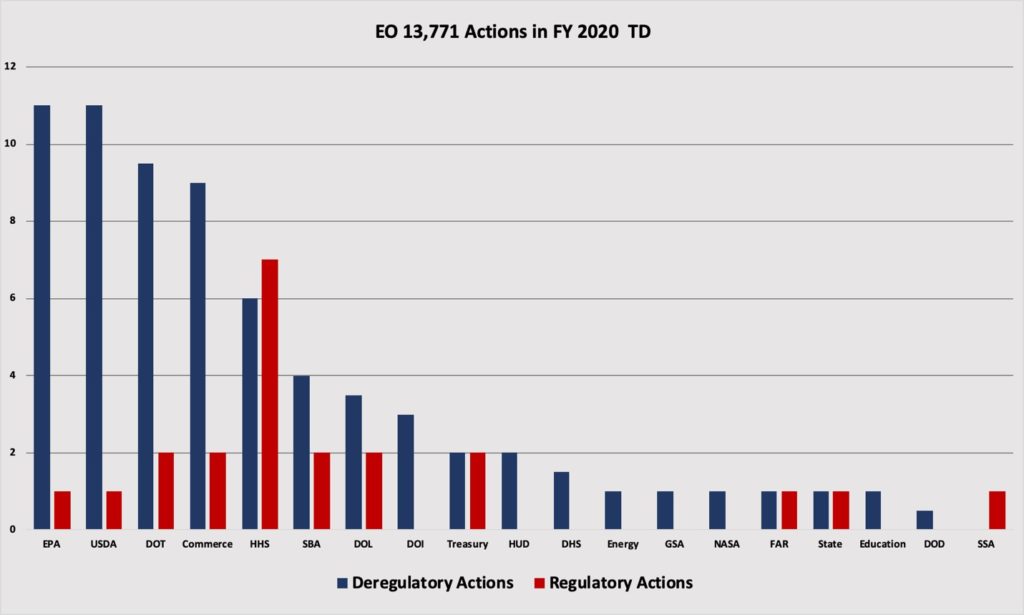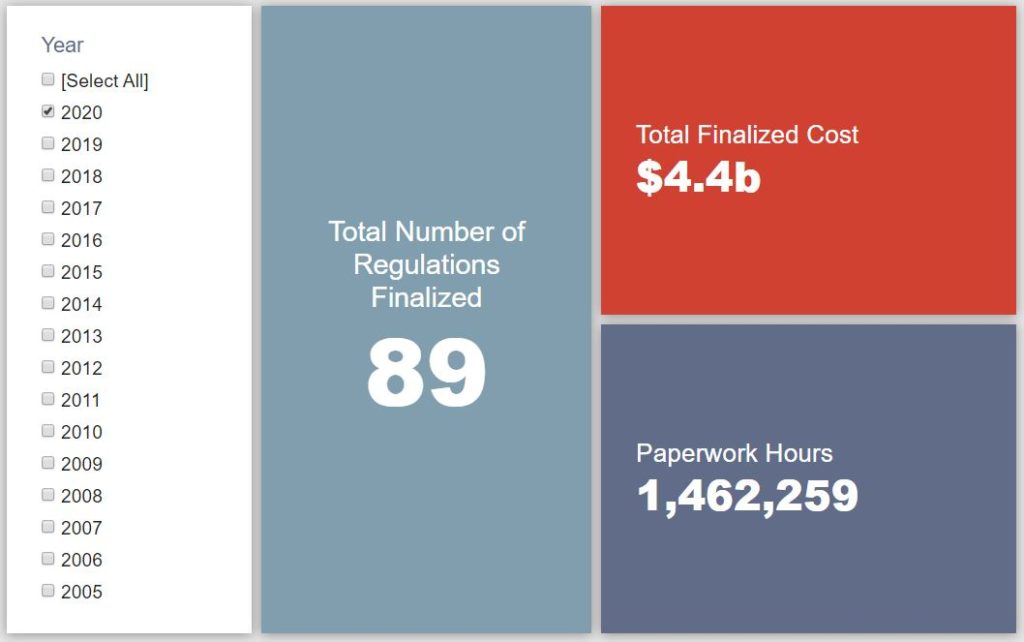Week in Regulation
April 6, 2020
Vehicle Rules Rule Otherwise Quiet Week
It was a big week for vehicle regulations as a proposed rule concerning automated vehicles hit the books and the administration’s overhaul of fuel efficiency requirements became public. Outside of those items, however, there was not much of consequence. Across all rulemakings, agencies published $631 million in total net cost savings but added 76,578 hours of annual paperwork.
REGULATORY TOPLINES
- 2020 Proposed Rules: 50
- 2020 Final Rules: 58
- 2020 Total Pages: 19,049
- 2020 Final Rule Costs: $4.4 billion
- 2020 Proposed Rule Costs: $3.1 billion
TRACKING THE REGULATORY BUDGET
The most significant rulemaking of the week in the Federal Register was a proposed rule from the Department of Transportation (DOT) regarding “Occupant Protection for Automated Driving Systems.” The proposal seeks to update the requirements surrounding such safety apparatuses as airbags in light of how different the layout and driving instruments in automated vehicles may become. DOT considers this to be a preliminary step in forming such standards but estimates that establishing the regulatory certainty for manufacturers in the early stages could yield $700 million in savings in 2050. Since it is a proposed rule, these savings do not yet apply to the fiscal year (FY) 2020 regulatory budget.
The Trump Administration expects to reach $51.6 billion in cumulative net savings in FY 2020. To date in the fiscal year, agencies have officially published 68 deregulatory actions and 22 regulatory actions, totaling $3.6 billion in quantified total net costs.
As noted in the introduction, however, the administration released its long-anticipated Safer, Affordable Fuel-Efficient Vehicles rule. While it technically doesn’t factor into the above math yet, when it officially hits the Federal Register it will swing the FY 2020 regulatory budget nearly $200 billion in the savings direction. See below for a graphic representation of all agencies’ progress at the half-way point.
THIS WEEK’S REGULATORY PICTURE
This week, a look at EO 13,771 regulatory budget actions at the midpoint of FY 2020.
March 31 marked halfway through the Trump Administration’s regulatory budget for FY 2020. Most of the focus has been on the economic impacts of the actions covered under EO 13,771. But another component of that executive order is that deregulatory actions should outnumber significant regulatory actions by at least two–to–one.
Through rules finalized on March 31, covered agencies had issued a total of 69 deregulatory actions versus 22 regulatory action, for a ratio of three –to one. The chart below breaks these actions down by agency.

The majority of deregulatory actions (59 percent) are clustered among four agencies that typically have a lot of rulemakings, the Environmental Protection Agency, and the Departments of Agriculture, Transportation, and Commerce. All agencies shown here have issued at least one deregulatory action, except for the Social Security Administration.
To date, the Department of Health and Human Service leads the way in regulatory actions. Its seven regulatory actions are five more than any other agency. Eight agencies in the chart have yet to finalize a regulatory action.
In terms of agency ratios, 13 of the 19 listed agencies have met or exceeded the two-for-one mandate so far.
TOTAL BURDENS
Since January 1, the federal government has published $7.5 billion in total net costs (with $4.4 billion in finalized costs) and 16 million hours of net annual paperwork burden increases (with 1.5 million hours due to final rules). Click here for the latest Reg Rodeo findings.












